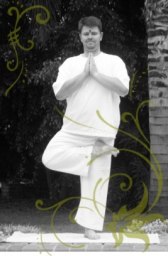Yoga
Asana purifies body and mind
Hatha yoga represents opposing energies: hot and cold (fire and water, following the same concept as the yin-yang), male and female, positive and negative, sun and moon. Hatha yoga attempts to balance mind and body via:
• physical exercises, or “asanas”,
• controlled breathing, and
• the calming of the mind through relaxation and meditation. Asanas teach poise, balance and strength and are practiced to improve the body’s physical health and clear the mind in preparation for meditation in the pursuit of enlightenment.
Asana eliminates
Asanas purify, strengthen and give flexibility to the body. When we do asana not only do we start to perspire, which eliminates toxins from the body, but we also place pressure on some of the glands in our body, helping us to rid the body of impurities and toxins associated with daily life. Through asana physical purification starts to happen, which also affects our subtle bodies. Without physical purification the move to subtle levels of consciousness cannot effectively happen. Asanas work to awaken and empower one’s innate but dormant nervous/psychic systems (often referred to as the nadis, chakras, energy, body, subtle body, etc.) so that even greater conscious integration and realization can occur through consistent effort.
Purification Through Posture and Breathing
The first four limbs of Yoga (Yama, Niyana, Asana & Pranayama) serve to bring the mind and body into harmony and balance. A strong emphasis is placed upon the necessity of purification and detoxification of the body, and various practices are encouraged to purify the body and the senses, of which asana is the most accessible and easiest to master for most people in the West. The practice of asanas mirror many of the lifestyle changes recommended today by the health sector and can be invaluable to maintaining one’s quality of health.
Yoga Postures (Asana)
The most widely known yoga practice in the West is asana, often known as Hatha yoga (asana means “ease” in Sanskrit). It includes a variety of physical postures and exercises that create immediate changes in the body. There are two main types of asana today: meditative and therapeutic.
Meditative asanas bring the spine and head into perfect alignment, promoting proper blood flow throughout the body, and bringing the mind into a state of relaxation and stillness that facilitates increased concentration during meditation. At the same time, these asanas keep the glands, lungs, and heart properly energized.
Therapeutic asanas such as the cobra locust, spinal twist, and shoulder stand are geared toward improving health and physical well-being, and have been commonly prescribed for patients with back, neck, and joint pain.
Discipline and Awareness
Although yoga postures may involve very little movement, the mind is involved in the performance of every asana, to provide discipline, awareness, and a relaxed openness. The discipline and awareness help maintain the posture, and the relaxation and openness help stimulate the circulation of prana (life energy), allowing the student to fully experience the power and essence of the posture.
“Practicing with total awareness within the body is advanced yoga, no matter how easy the posture; practicing with your attention scattered is the practice of a beginner, no matter how difficult the posture. Hatha yoga trains the mind as well as the body, so focus your attention without lapse.” H. David Coulter.
Balance
According to the Yoga Sutras, a properly executed asana creates a balance between movement and stillness–exertion and surrender–which is precisely the state of a healthy body. The practitioner learns to regulate autonomic functions like heartbeat and breath, while physical tensions fade into relaxation.
- ← Previous
- 1
- 2
- 3

